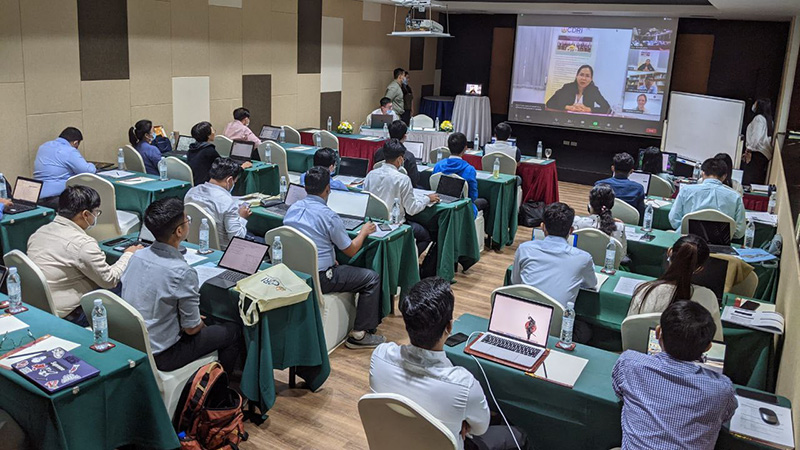
News
10 December 2021Blog – Effect of Covid-19 Pandemic on Women
Author: Dr. Kyoko Kusakabe, Professor of Gender and Development Studies at Department of Development and Sustainability, School of Environment, Resources and Development, Asian Institute of Technology in Thailand and Adviser to the IDRC Project on the Impact of Covid-19 on Inclusive Development and Democratic Governance
On the occasion of the 16 days of activism against gender-based violence, it is important to highlight how the pandemic has exacerbated violence against women. UNWomen called violence against women as a shadow pandemic under Covid-19. Even before the pandemic, one in three women experienced physical or sexual violence, but that is increasing under Covid-19 pandemic.
There have been studies that point out how women and men are differently affected by Covid-19. Some of the main issues include:
(1) Increase in domestic violence as noted above. The cramped living condition, stress experienced by family members, family members not going out and have decreased connection with outsiders – all of these have served to increase the vulnerability of weaker members in the household.
(2) Increase in women's unemployment. Both women and men have suffered from job loss during the pandemic, but the sector that has been hit harder were women dominated industry such as service and entertainment industry. Garment industry, where 75% of the workers are women, have also been hard hit with supply chain disturbance and people staying at home. For example, Uniqlo has decreased its sales by 12.3% in 2020, the first ever decrease in the past 17 years.
(3) Women’s time burden and stress increased with schools and nurseries closed. They now have to feed the family as well as look after their education. Many low income women are in occupations that do not allow them to work from home, so their workload has increased. There has been no report that said that during Covid-19 pandemic, gender division of labor of household work has become more equitable.
(4) Pregnant and lactating mothers’ health might be jeopardized during the pandemic. Women might refrain from visiting hospitals for anti-natal and post-natal care, because of fear of infection.
(5) The impact on women might be more invisible not only because effects on domestic work is not in official statistics, but also because many women are in the informal sector. If the compensation is linked to social security, informal sector workers will not be able to access. Women’s small businesses are often not registered, so they are not able to access the government’s loan schemes for small-scale businesses. Women who work in entertainment industries and in sex work are affected since they are closed down the longest, but they are often not under social security and often not entitled to any kind of state support.
Now that the infection rates are reducing, we are eyeing on the post pandemic situation. Will we return to “normal” as in the pre-pandemic situation?
The pandemic has forced workers for remote work or work-from-home, and employers have now experienced that such flexible working style is feasible. Such flexibility was demanded by women workers for a long time to make it easier for them to juggle their domestic responsibilities. Now that people have been used to remote work, there is a possibility that different working style can become more accepted and practiced even after the pandemic.
Although flexibility is a welcome move, there are some concerns:
a) Without the changes in gender division of labor in the household, remote work will simply increase women’s workload, as has been seen during the pandemic. Continuation of remote work arrangements needs to be accompanied with better childcare support as well as facilitation of sharing of household work between women and men.
b) Work from home can deprive workers to meet and make connections. This can lead to fragmentation of workers which makes it difficult for workers to organize collective action. Noting that more women might choose to work from home because of domestic responsibilities, women might face higher risk of being isolated.
c) Whether employment of women will return to the pre-pandemic level can be questionable. In 2021, garment industry is regaining its strength with online sales picking up, but it is questionable whether the recovery at the top will be transferred to employment at the bottom. ILO’s research brief showed that women garment factory workers can be left unemployed while factories go for automation or can be left in a low paying job with bifurcation of the industry. Entertainment and tourism industry might take much longer time to recover, putting service sector workers especially sex workers in an even further vulnerable position. Small informal businesses, where low income women are concentrated might have difficulty restarting without any state support.
Covid-19 pandemic has hit women hard, and the effect might have left a permanent scar on the situation of gender equality and decent work for women.



